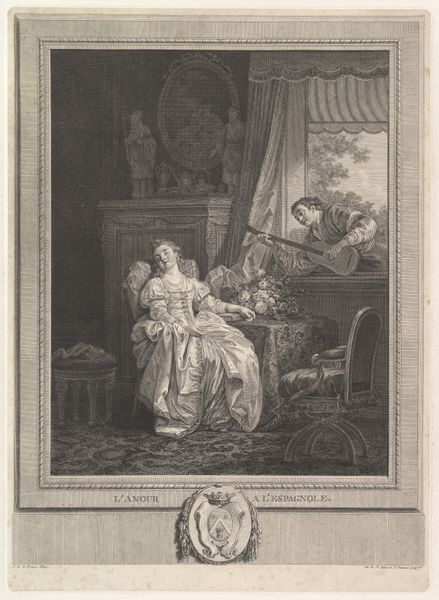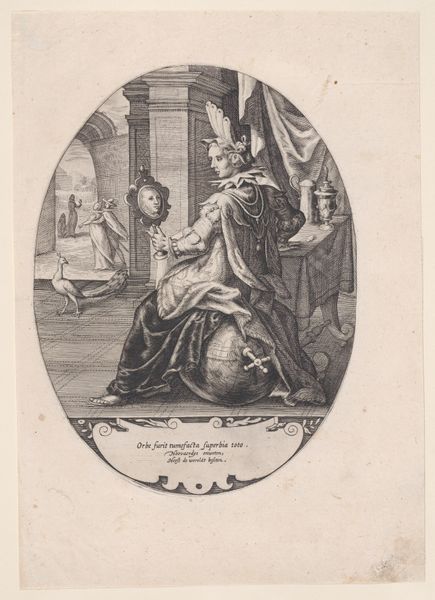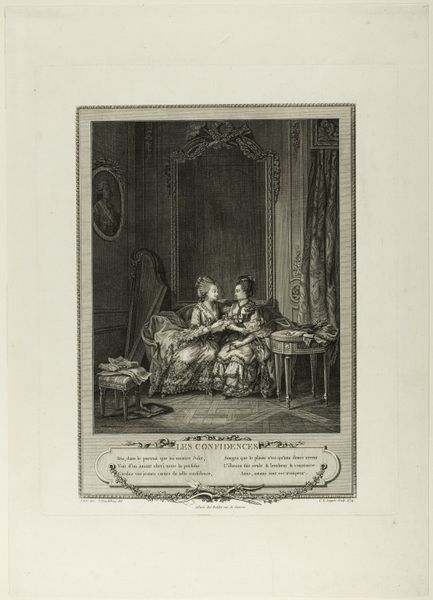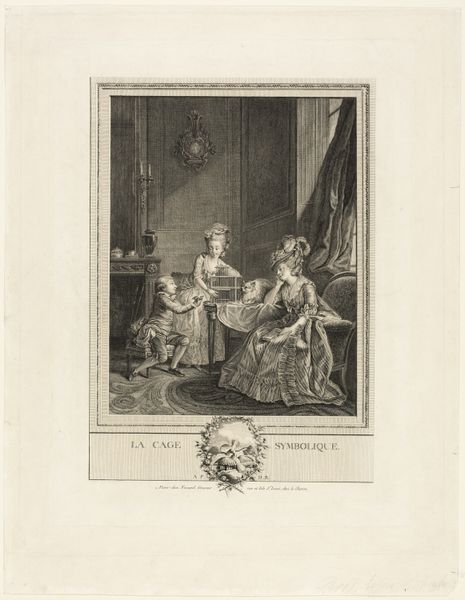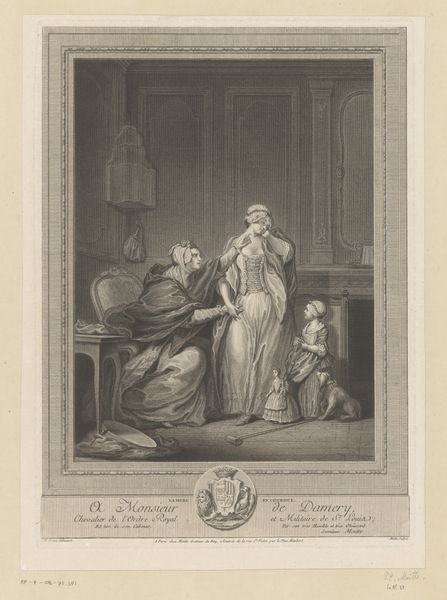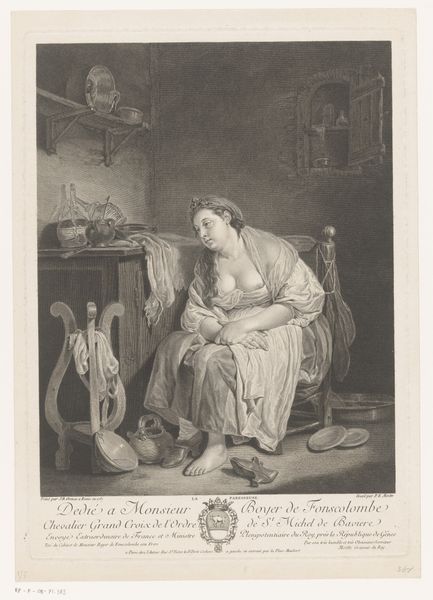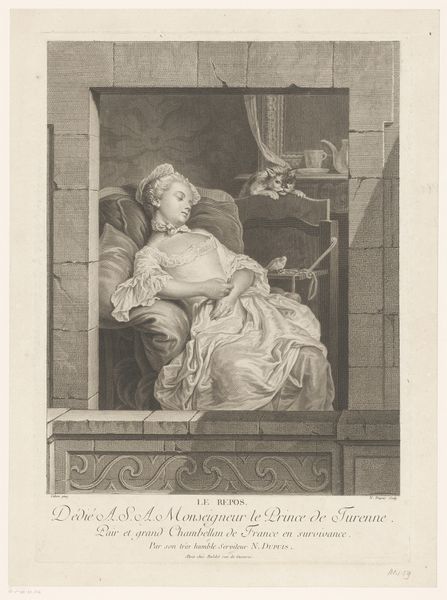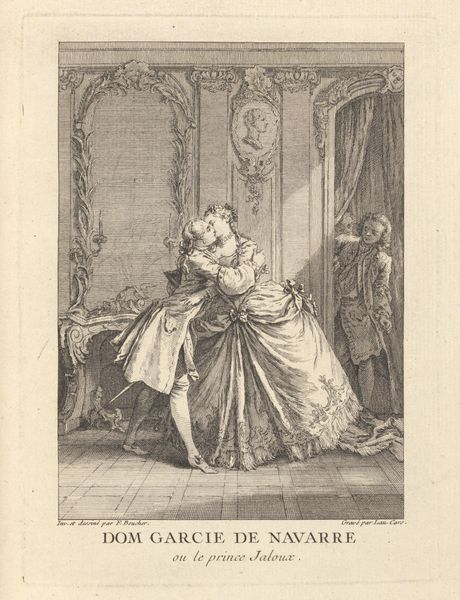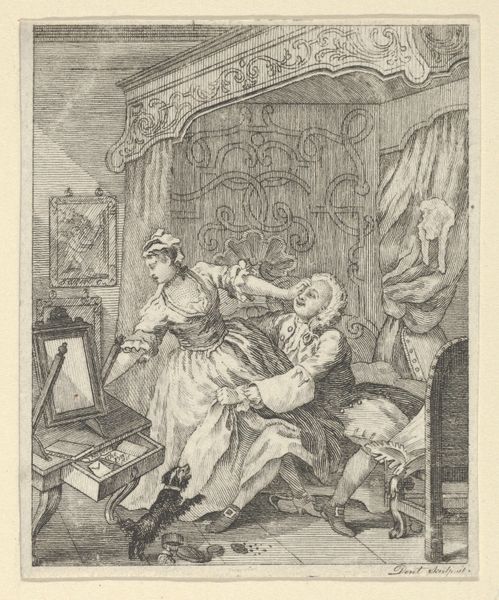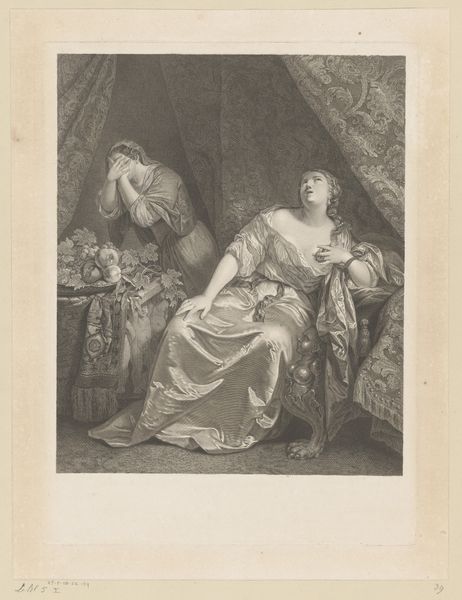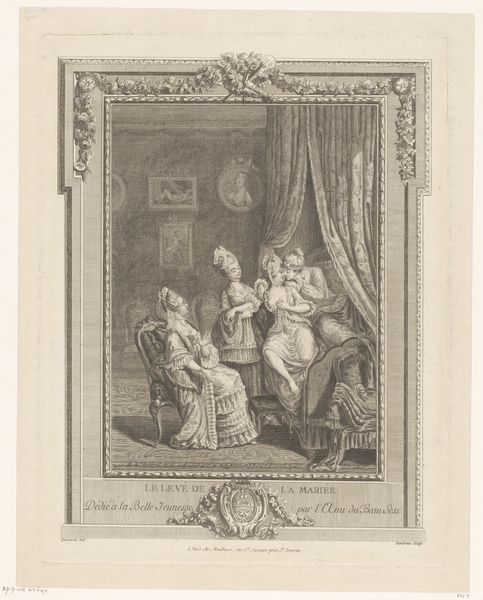
engraving
#
portrait
#
allegory
#
old engraving style
#
figuration
#
line
#
genre-painting
#
history-painting
#
engraving
#
rococo
Dimensions: height 404 mm, width 300 mm
Copyright: Rijks Museum: Open Domain
Curator: This engraving from 1765 by François Hubert, titled "Interieur met een lezende vrouw, bezocht door Amor," presents a tableau vivant of Rococo elegance. What strikes you first? Editor: The starkness, paradoxically. It's an engraving, of course, but the sheer volume of precise lines somehow strips away a lot of potential depth, leaving it feeling rather two-dimensional, a bit flattened, despite the implied textures. Curator: Interesting. The meticulous linework is essential. The image functions through contrasting patterns, the flowing lines of the woman’s robe against the rigorous architecture, and the subtle tonal variations crafted solely with lines to evoke shadow and light. This allows the composition to focus on the central narrative contrast. Editor: And that narrative, delivered, of course, through material clues: notice the quality of the paper itself. Its texture speaks to the intended audience—wealthy enough to commission and collect engravings like this, a direct insight into class and labor during the Rococo. We also see the process of making this piece reflected in the details of the clothing and interiors; the details show a certain affluence tied to materials such as silk and ornamentation within domestic space. Curator: Indeed. Consider how the cupid, with his impish grin, contrasts against the studied composure of the woman reading. It represents the disruptive potential of love intruding upon intellectual pursuits. Observe her garments: they imply both status and a certain constraint. These formal elements contribute to the print's delicate equilibrium, its suggestion of narrative without fully disclosing it. Editor: But think too of how such scenes romanticize the act of reading for women. Here we have, ostensibly, leisure and the freedom to study, but that freedom is inherently restricted, existing only through the material and social structures that support it—the very structures visualized here through fine paper, lavish robes, and ornate rooms. The scene presents a dream more than a reality. Curator: Perhaps so. Through a concentrated visual language, it creates a world governed by the push and pull between order and desire. Editor: Ultimately, it is an expertly crafted image; its value emerges precisely from that meticulous detail, that refined labor. But we must ask: labor for whom? What realities are omitted within the beautiful image? Curator: A stimulating divergence, prompting contemplation on art's construction, meaning, and reach. Thank you.
Comments
No comments
Be the first to comment and join the conversation on the ultimate creative platform.
